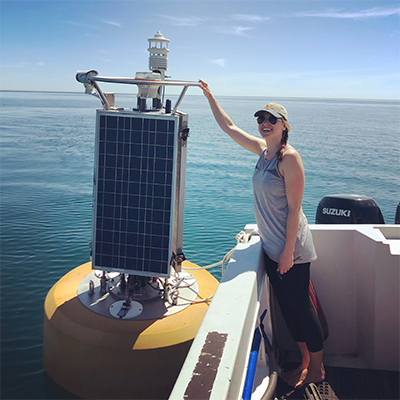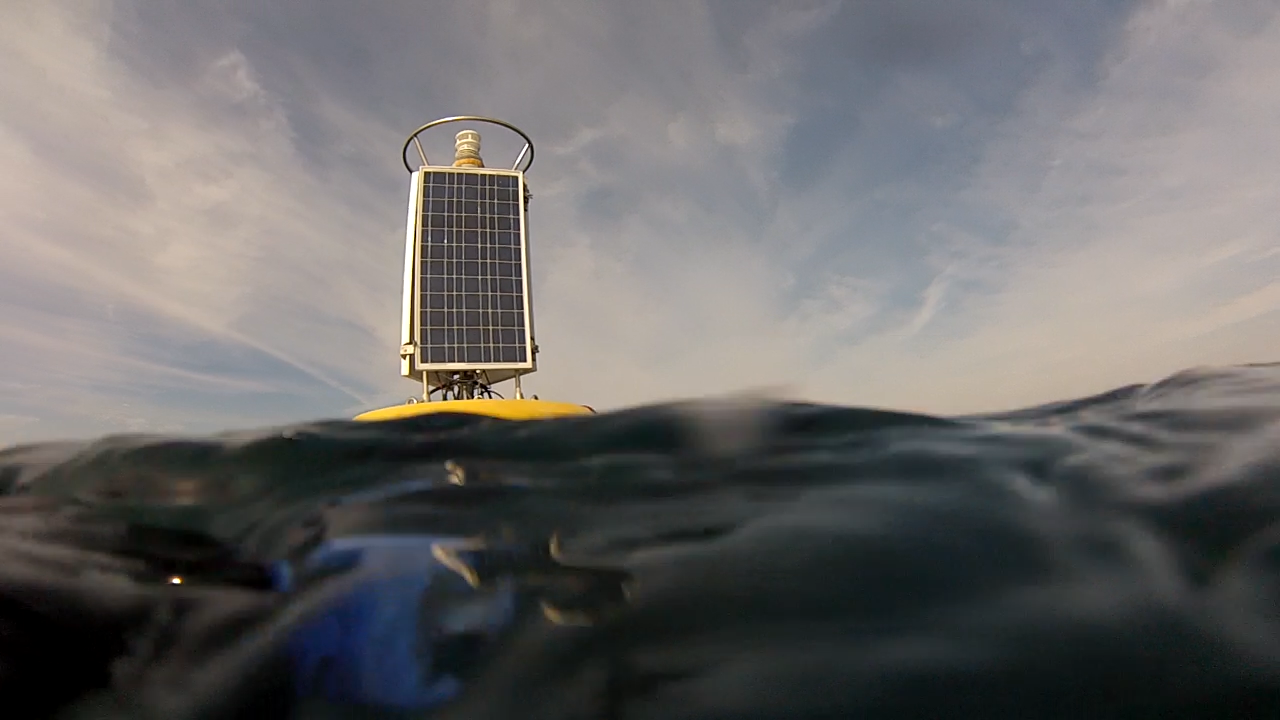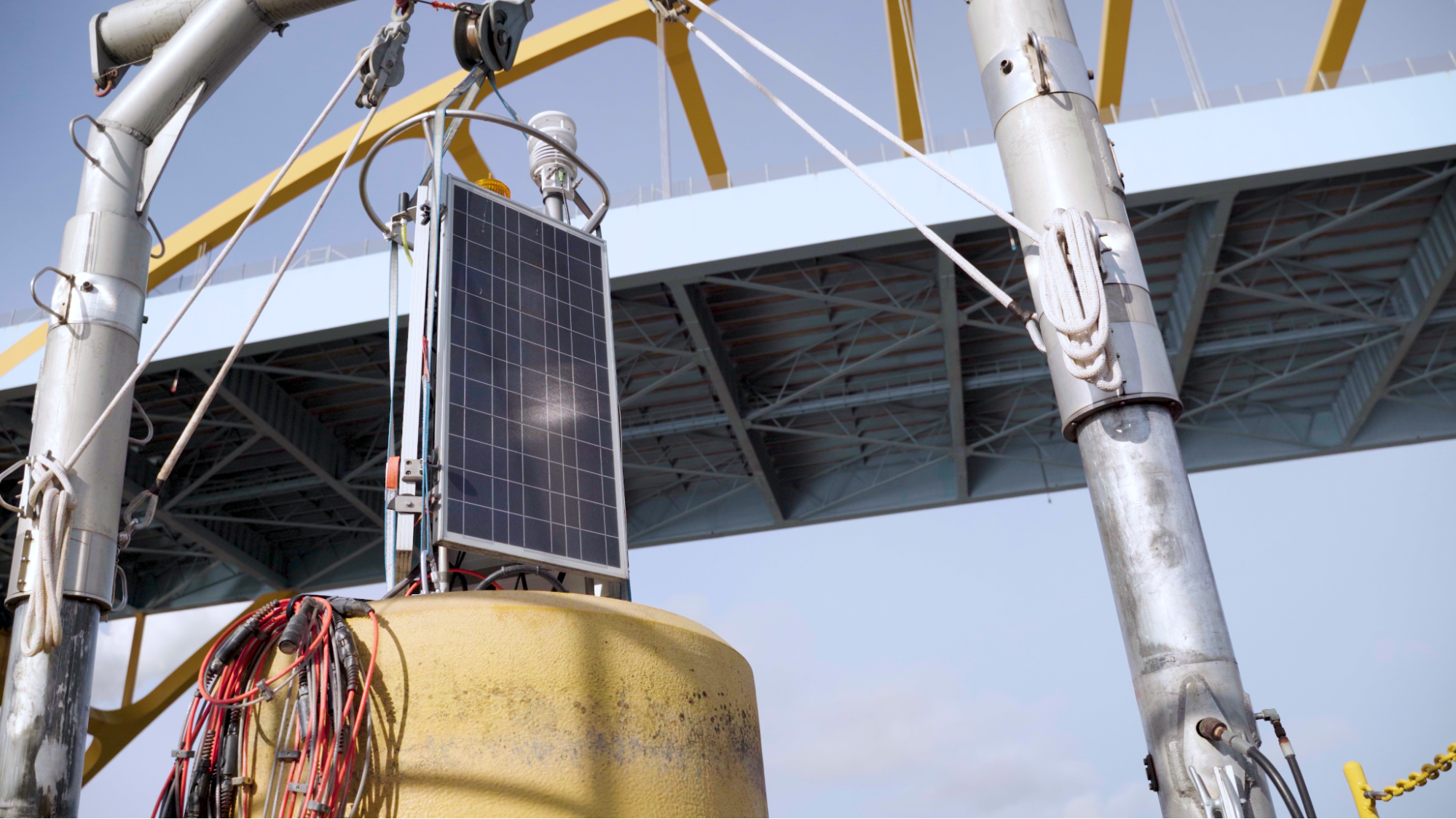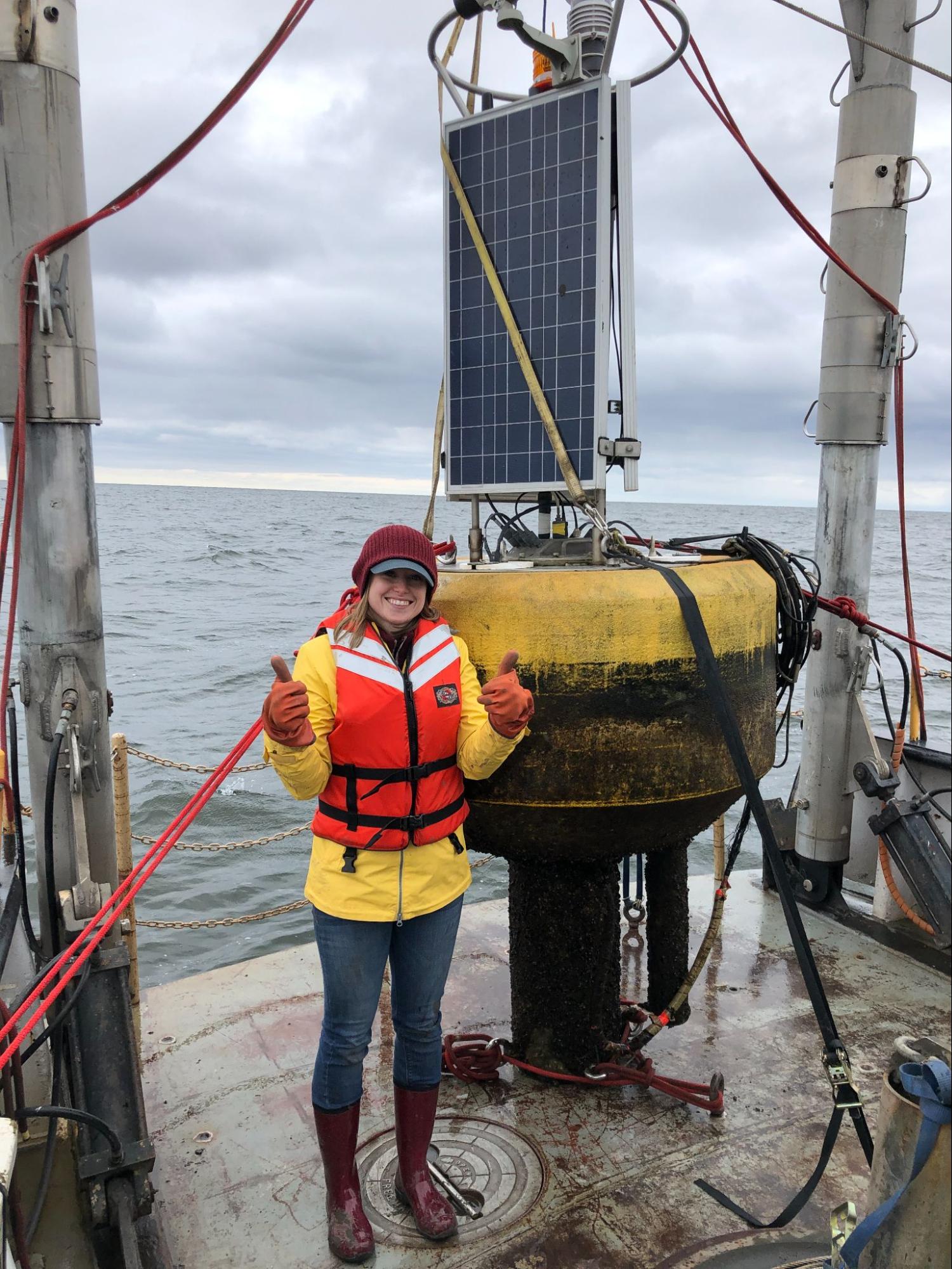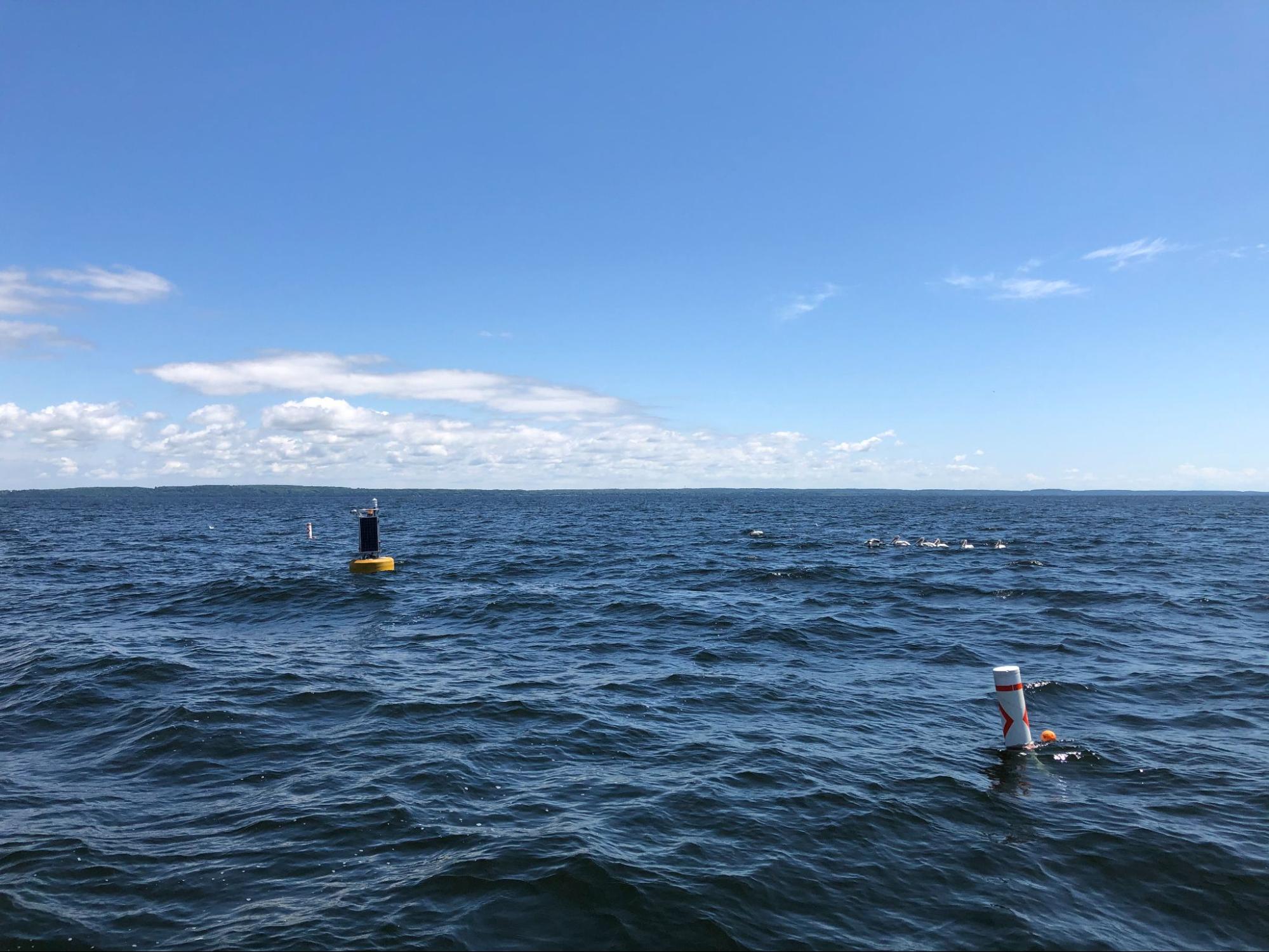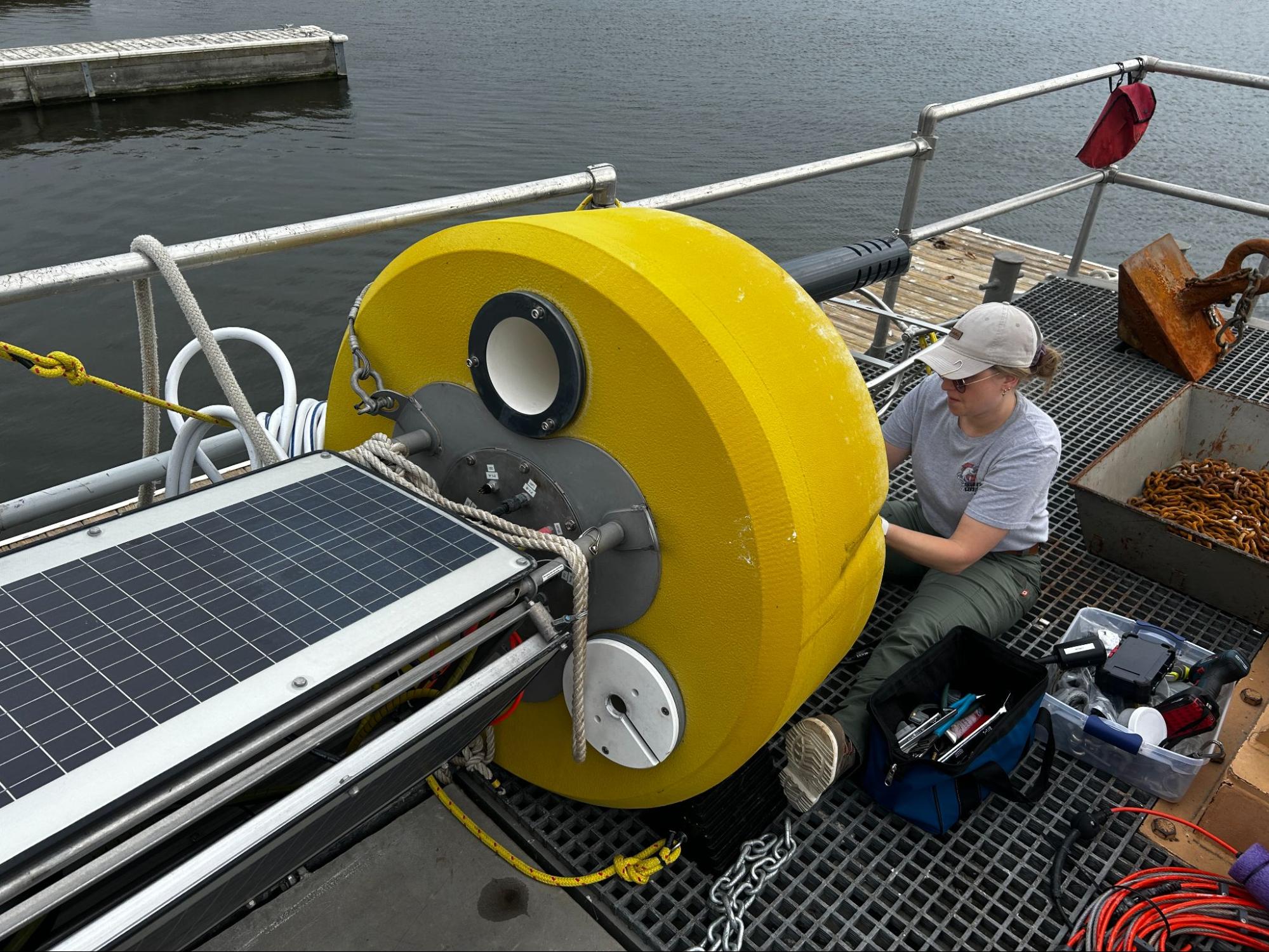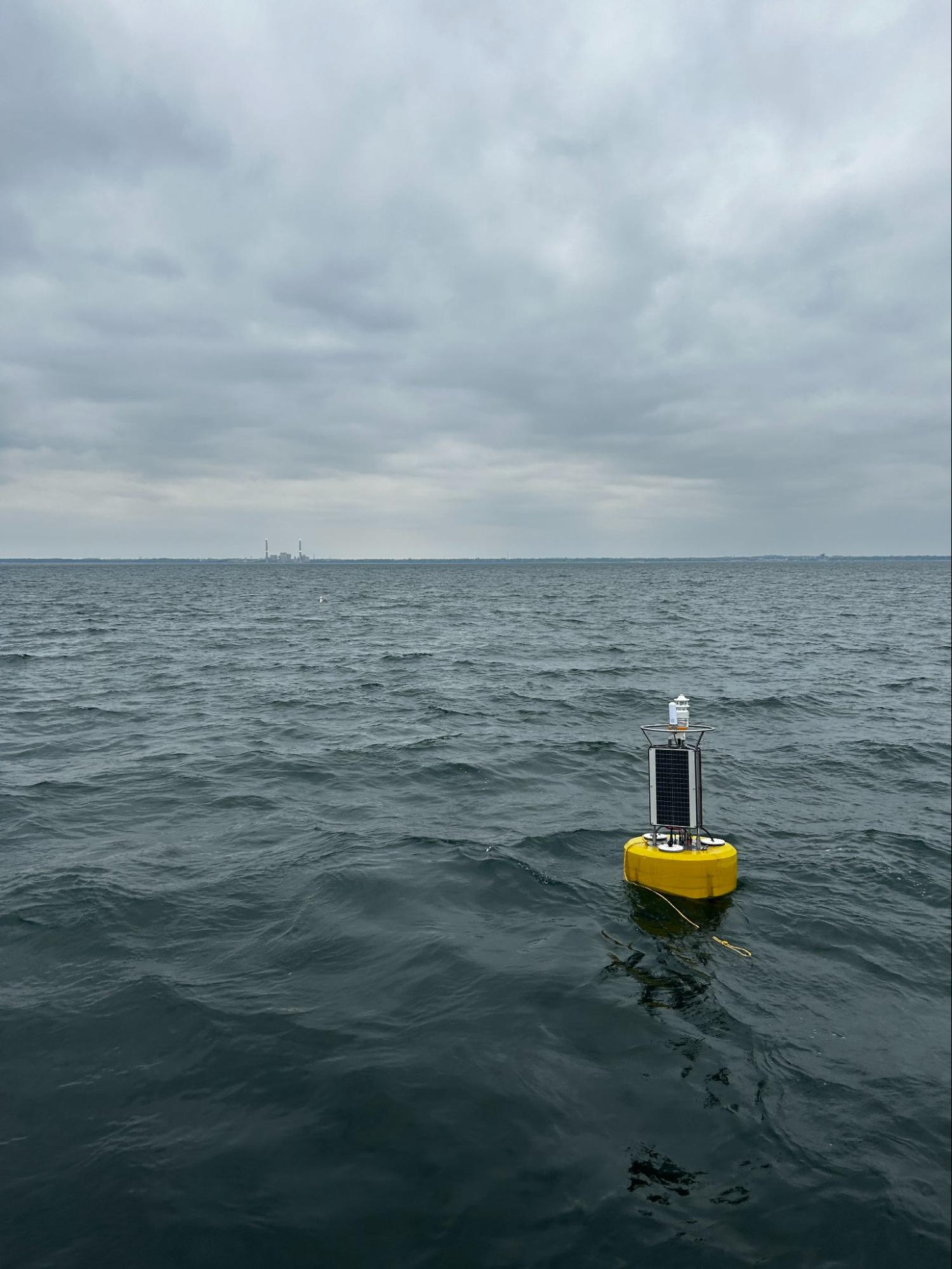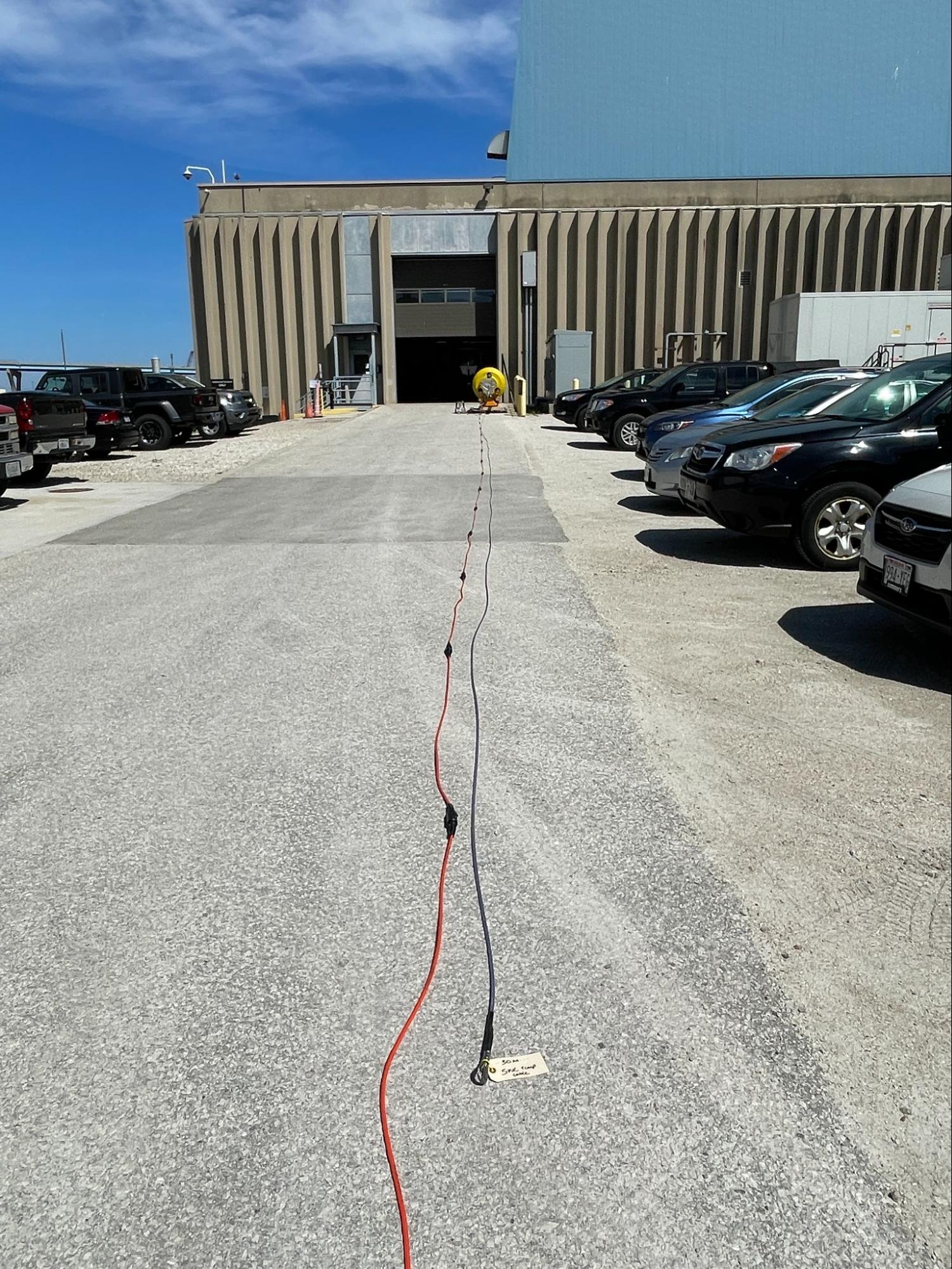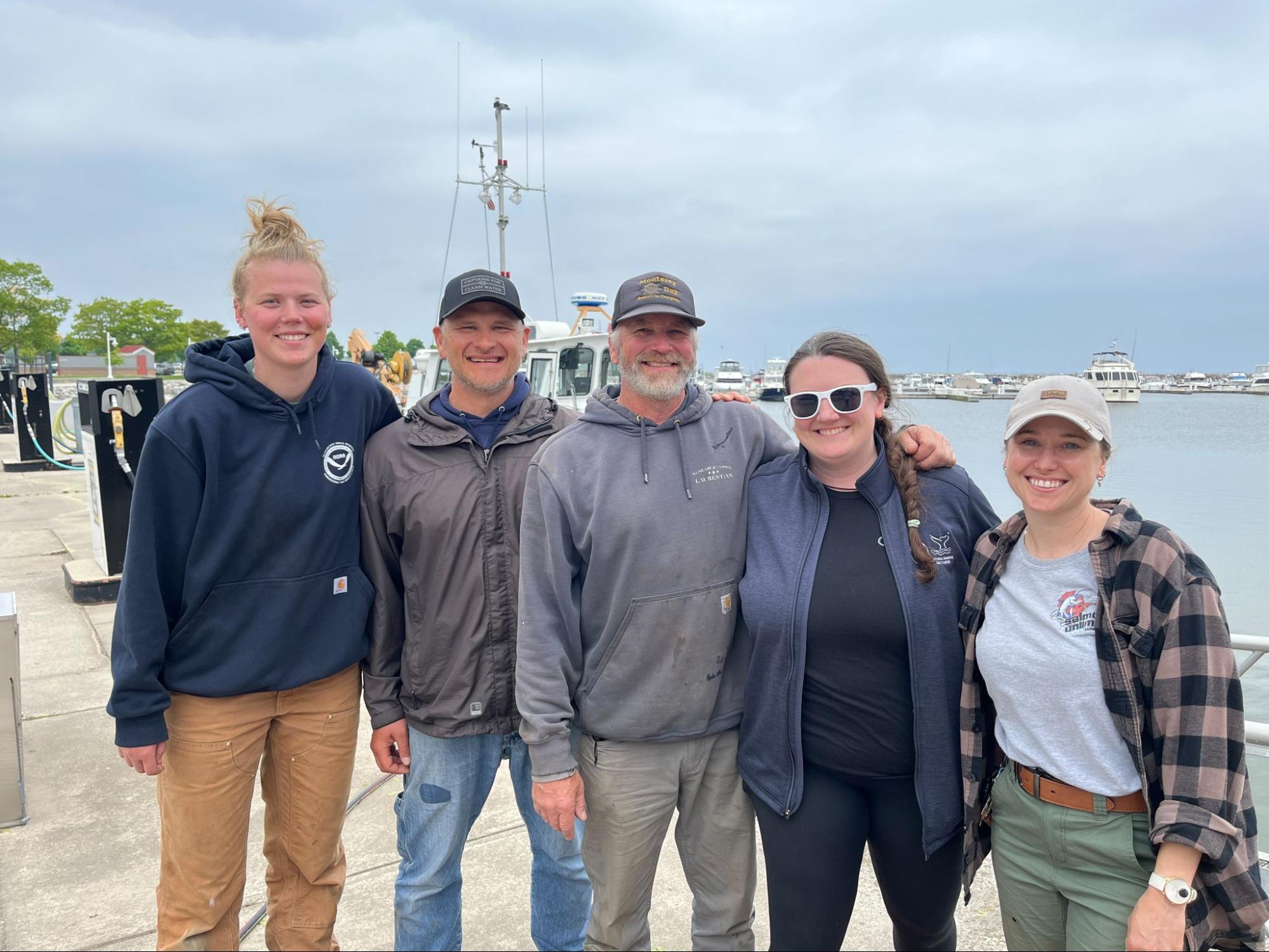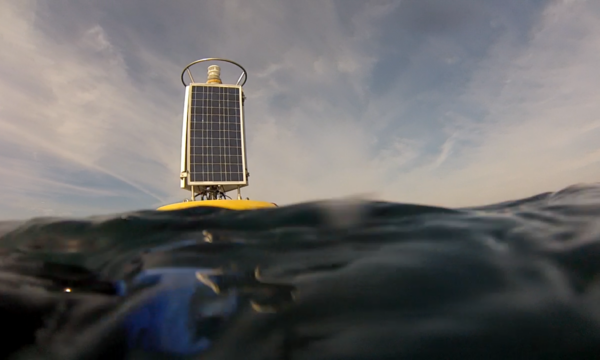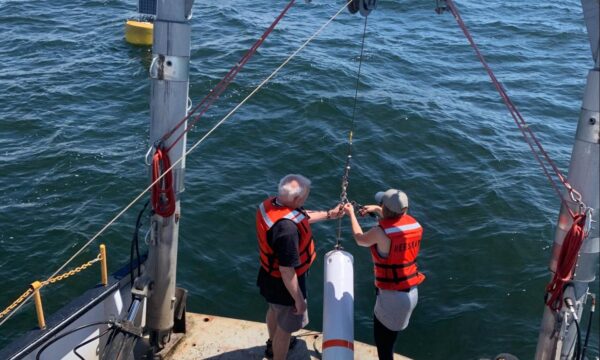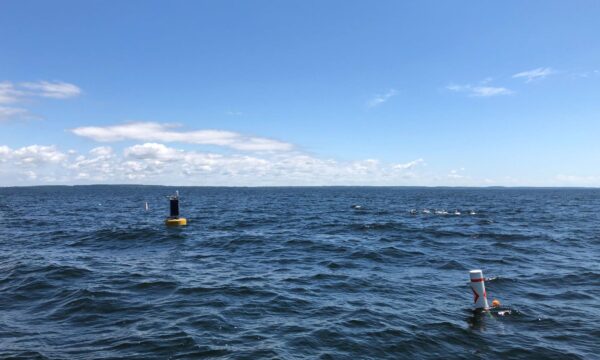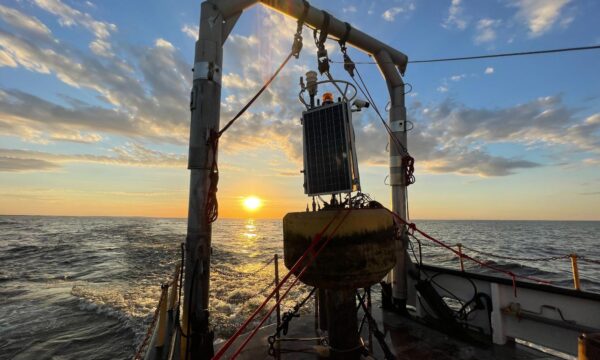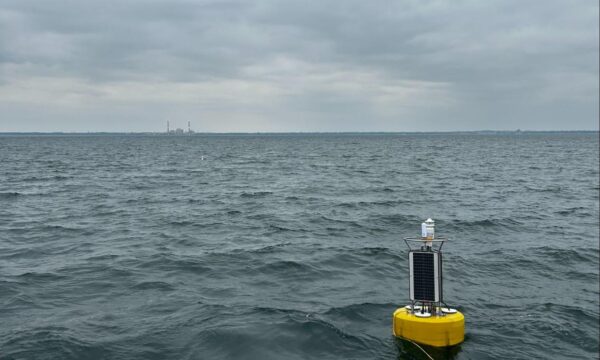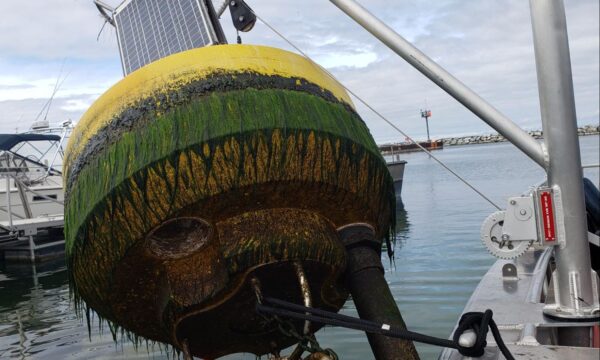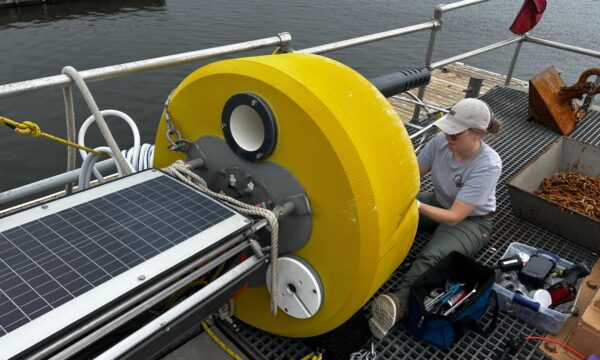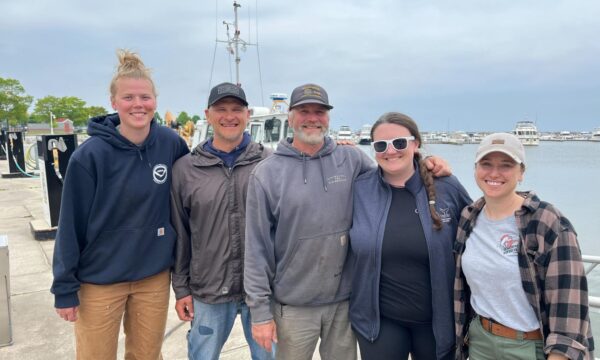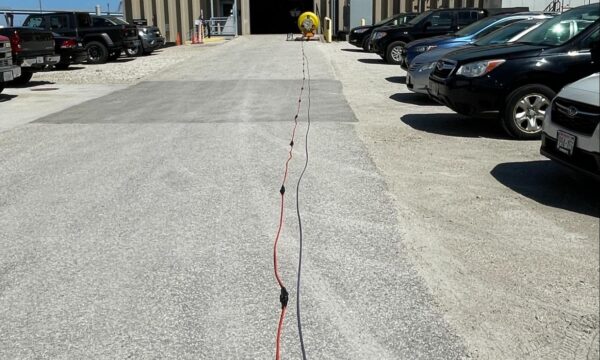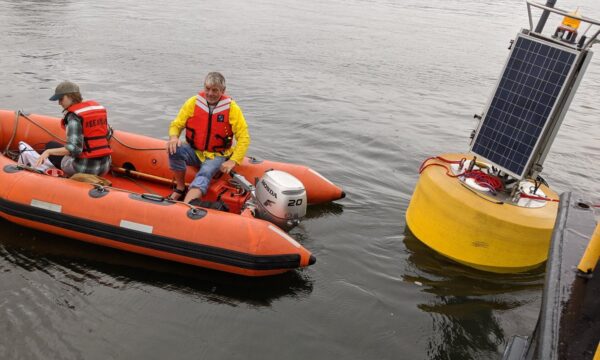The University of Wisconsin-Milwaukee School of Freshwater Sciences is home to certified freshwater superstars. And their buoy program? May simply be the best in the land (and lakes). Led by buoy wrangler extraordinaire Jessie Grow, this fleet of smart, solar-powered stalwarts peppers the nearshore region across Lake Michigan, quietly collecting some of the most important environmental data for a wide array of users. From tracking water temperature and weather to monitoring waves, water quality and more, these buoys support everything from public safety and beach forecasts to the shipping industry and climate research. Used by boaters, anglers, swimmers, surfers, scientists, and policy-makers alike, these platforms are the real heroes – keeping a finger on the pulse of Lake Michigan and contributing to a smarter, more robust understanding of the Great Lakes overall.
We asked Jessie to provide a little rundown on the systems she manages.
Here’s what she had to share:
Atwater – “Buoy Beloved”
Meet the Atwater buoy – the crown jewel of our fleet and a community favorite since her debut in 2011. She’s been faithfully floating (don’t worry, moorings are in place) just offshore of Atwater Beach in Milwaukee collecting vital data with an impressive array of environmental sensors: a weather station, wave sensor, current profiler, surface water-quality probes, and perhaps the real MVP – a temperature string that captures lake temps top to bottom. With over 2,500 days of deployment (not even counting the 2025 season) she’s not just a buoy, she’s a local legend.
Over the years, this buoy has had her share of adventures, and so have we! A few seasons back, she had to come back to the lab shortly after deployment for a full electronics upgrade after a rookie wiring mistake (*cough*Jessie *cough*) that caused the camera’s modem array to drain the whole system’s batteries despite being solar powered. Lesson learned: solar controllers can’t read minds. And just last year, we recovered her to find a mystery dent in the solar tower and a wobbly panel. It seems like someone may have celebrated a bit too hard on the 4th of July, as our wave sensor’s “ship strike” data pointed to a little late-night bumper boating. The good news? Atwater shrugged it off like a champ. The marine beacon was still working, the data kept flowing, and we all got a reminder to boat responsibly (especially near local icons).
The Green Bay Mainstay
Stationed between Sturgeon Bay and the city of Green Bay, the famous “GB17” buoy has been riding the waves since 2012. She’s been key in capturing the unique dynamics of the bay, including some intense algal blooms, some sneaky hypoxic blobs, and dramatic temperature swings that would even give Lake Erie a run for its money. Fully loaded with environmental sensors and serious work ethic, she provides the public and researchers with some of our most in-demand data, including real-time water-quality readings near the bottom of the bay, where those low-oxygen zones can wreak havoc on the benthic ecosystem.
While we’ve been collecting seasonal bottom water data here for years, a major milestone came in 2020 when we finally integrated a multiparameter sonde (French for “probe”) directly into the buoy’s setup. For the first time, locals could monitor deep-water oxygen levels in near real-time – a game changer for tracking hypoxia and staying ahead of potential events.
Of course, it hasn’t all been smooth sailing. One season, she sprung a significant leak, and her electronics did not appreciate the impromptu bath. After a full rescue mission complete with drying racks, new batteries, and a comprehensive rewire-athon, she was back in action for the following season. Another lesson learned: when it comes to waterproofing, redundancies are never a bad idea.
Sleeping Bear – “The Dune Scout”
Next up in the fleet lineup: the Sleeping Bear Dunes buoy (aka SLBE). She’s been holding it down since 2018, and despite being one of the younger buoys in our crew, she delivers big when it comes to data – offering a valuable perspective from the other side of the pond (at least from our Milwaukee vantage point). Dr. Harvey Bootsma of UWM-SFS, who has spent years diving and researching in this region, helped make the case for deploying a buoy near his long-term monitoring site. With support from the National Park Service and GLOS, a slightly smaller system was designed – compact, but still packed with essentials like a solar array, data logger, weather station, and surface water-quality sonde. In 2020, she got a bit of a glow-up with the addition of crowd favorites: a wave sensor and a full temperature string.
But SLBE has a persistent problem: cormorants. These wiley birds seem to think she’s the penthouse suite of Lake Michigan perches. Every fall when the team recovers the buoy, she’s absolutely caked in guano. It’s honestly impressive that her solar panels manage to squeeze out any power at all. We’ve tried just about every bird deterrent in the book, but the local cormorants remain undefeated. Despite the unwelcome guests, SLBE resolutely does her job throughout the season.
The Shipwreck Sentinel
Anchored off the coast of Sheboygan, this system was brought to life through a collaboration between UWM-SFS and NOAA’s Wisconsin Shipwreck Coast National Marine Sanctuary (a mouthful, we know), with generous support from The Fund for Lake Michigan. With a shared mission to monitor water quality, we teamed up to secure grant funding and built a buoy capable of delivering high-impact data right where it’s needed most. NOAA’s Great Lakes Environmental Research Lab (GLERL) provided a brand-new water-quality sonde, their research vessel crew handled deployment and recovery, and we took the lead on design, build, maintenance, and making sure the data made it safely to shore.
Of course, no engineering story is complete without a few gremlins. Last year, backend bugs caused frustrating data delays and even led to a failed field troubleshooting mission (no leaks, pinched wires, or faulty gear in sight — just a lot of new worry wrinkles for Jessie). Thankfully, the NexSens web team dove in, and after several rounds of digital detective work, the culprit was found.
This season? Gremlin activity is at an all-time low, and the data is flowing smoothly. A true team effort – and a satisfying chapter (so far!) in the buoy’s story.
Special thanks to Jessie Grow for providing all of the information and photos for our very first Buoys of Summer!
Check out all of UW-Milwaukee’s platforms on Seagull.
